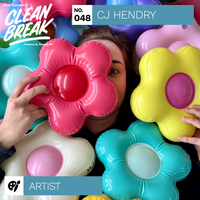Pricing work
- by Always Art Staff


Most artists put their energy and heart into the process of thinking, making, and finessing their work, while paying little attention to the pricing until the final moment when a number has to be declared. Pricing is not typically taught in any art school or art class and as a result, many artists find the process of pricing their work to be challenging, confusing, and uncomfortable. Especially at the early stages in one’s career, coming up with a price can feel like a shot in the dark.
Making the work stems from an internal process of thinking, reflection, and passion, and putting a price on that process and product requires you to make a leap from the internal word to the external world of value, the market, and consumerism. But pricing is an essential aspect of the business of art and being an artist, and there are some general strategies and best practices that you can employ to make the process more straightforward.
Why pricing matters early in your career
Although you may be inclined to shrug off the prices you set in the beginning of your career, it is actually essential that you pay close attention to the prices you set at this stage. Like any other career with a salary that is set to increase as one gets promoted, being an artist is a career path and pricing your early work sets the trajectory for your price range moving forward. Ultimately, after producing the best work you can, pricing and selling your work is the second most important thing you do as an artist.
Common pricing hurdles
As the maker of the artwork, it can feel impossible to put a price on that process and outcome, especially when most artists care more about making the work than they do about the business side of the industry. As a result, many artists make similar mistakes, including:
- Playing a guessing game with the pricing: This results in some artists who are more conservative underpricing their work, while others are overly confident and set a price that is too high to sell.
- Relying too heavily on a gallery: If you are working with a gallery, they can help you price your wok since they have more experience, but this should not be treated as the holy grail. A gallery’s input should be just one datapoint and ultimately, you should always be in charge of your prices, your career, and your business.
- Feeling like you are ‘selling out’ if you sell your work: Many artists hold the belief that it is not respectable to sell one’s work and that it even can mean you are ‘selling out’ to the art world. Whether it is because you have been told that because art is your passion, it should not be for sale, or that creative labor should not be commodified, don’t let this fear of ‘selling out’ dominate your thinking. If you follow this logic and either price your work low, or give it away for free, ultimately collectors will be taking advantage of the creative value you add to the world. To avoid this pitfall, price your work following the methods below and treat your work and art practice as a career with equal value to other industries in our society where workers are compensated for their labor and time.
Ideas to keep in mind
There are so many factors to consider when determining pricing that it can result in confusion, chaos, and lack of methodology. Remember to consider the following:
- Scalability: Ideally, you will wind up working with several galleries in the long run, so you will need to take that into account to develop prices that can grow with your career at an international scale.
- Leave room for growth: Your prices should be realistic and consistent. Generally, you can’t lower them after they increase, and you do not want to plateau too fast.
- You need to start somewhere: It is totally normal if you make less profit in the beginning as you are growing your exposure and getting your name out there.
- Show your work: The goal is to get your work seen and establish demand.
- Conduct market research: Even after you set your prices, always go back and see if they would conform to what the market allows for your stage, size, medium, and location.
Four common pricing models you can use
Method 1: Price per unit of measure (Inches or centimeters)
One of the popular pricing methods is pricing by the square inch or square centimeter. This method requires that you come up with a price per square inch (or centimeter) and multiply this by the total size of the artwork.
Now, you might be wondering what your price per square should be. That can be the most challenging part of this method at first. To determine that rate, you can follow two options. First, you can go to group shows that include artists at the beginning of their career. These shows will have a variety of price points so you can get a sense of the market rate.
Second, you can research other artists at your career level whose works are selling and are comparable to your style and technique. Check their pre-show catalogs to see pricing in group and solo shows to develop a reference point. Consider their price points according to the size of the artworks and determine the dollar multiplier of each one. Then, find the average and set yours near that. If you are just starting out on your own, keep your rate affordable. You can moderately increase it over time, based on reception, selling speed, and sell through rate.
Once you have your price per square unit, you can calculate a price for a specific work using the following formula:
- Step 1: Width of artwork x length = Total size (in either inches or centimeters)
- Step 2: Total size x price per square unit = Total price
Be sure to use the same measurement unit consistently throughout.
This formula can be adjusted in a few cases:
- After performing this calculation, if you get an odd price or a seemingly random number, feel free to round up.
- If you are working with a gallery, always ensure that you are accounting for their commission fee when calculating the price.
- For small works, you need to increase the dollar multiplier to get a reasonable final price.
For large works, you need to lower it so that you do not overcharge relative to where you are in your career.
Method 2: Time and materials
This pricing method makes the most sense for new artists who have no idea how to price their work, as it allows you to work backwards. In keeping with more traditional income methods, this method allows you to price your work based on your hourly wage and the cost of materials.
Here’s how you can calculate pricing using this method:
- Step 1: Determine a livable hourly wage based on minimum wages or average artists wages in your area, or the general cost of living. This number needs to be realistic for the stage of your career.
-
Step 2: Calculate hourly wage from step 1 x number of hours you
spent on the piece = Labor cost - Step 3: Labor cost + Cost of materials for the artwork = Final price
Note that you may need to adjust your hourly wage—if there is a piece you spent a significant number of hours on that resulted in an extravagant price relative to your reputation and credentials, lowering your hourly wage would be a realistic option.
This pricing method is good for an emerging artist to understand real costs and to plan for a livable wage but is ultimately not how you should actually price your early works. Because your time will vary greatly as you are learning and trying new things, your prices will also be all over the map for a given artwork size. Transparency and ease of understanding is critical for your early collectors, and when you use this method, they will not understand why two painting of the same size vary greatly in price.
Method 3: Size of painting
Another popular option is to set a price range for the small, medium, and large works you create or for the standard canvas sizes you use. This model is somewhat of a combination of the price per unit of measure and time and materials methods.

As always, when using this method, you should research other artists in your career stage with similar work and determine the average price that each size sells for. Then, you can price your work around the average you are comfortable with, while continuing to account for any relevant gallery commissions.

Method 4: Sold out vs. Stocked up
At the beginning of their career, some artists prefer to have their shows sold out no matter what the prices were, as pricing and revenue are not their biggest worry at this stage. This strategy can be productive in many ways:
-
 • It increases your confidence when you make a large volume of sales.
• It increases your confidence when you make a large volume of sales. -
 • You sell more work, so you have more experience talking about price and getting comfortable with those conversations.
• You sell more work, so you have more experience talking about price and getting comfortable with those conversations. -
 • It grows demand for your work as it becomes “sought after.”
• It grows demand for your work as it becomes “sought after.” -
 • It allows you to gradually increase your prices show after show as you continue to sell out.
• It allows you to gradually increase your prices show after show as you continue to sell out. -
 • Selling out and continuing to increase your prices slowly attracts galleries because having the label of a sellout artist gives them reassurance and
encourages them to work with you. Galleries are businesses and are always on the lookout for artists that sell. If your art is high-quality and you are bringing unique ideas to the market, your works can sell
out in minutes, which is a remarkable feat.
• Selling out and continuing to increase your prices slowly attracts galleries because having the label of a sellout artist gives them reassurance and
encourages them to work with you. Galleries are businesses and are always on the lookout for artists that sell. If your art is high-quality and you are bringing unique ideas to the market, your works can sell
out in minutes, which is a remarkable feat.
No matter what, do not raise your prices too high too fast, it is a progressive build and something you want to allow to grow throughout your career. Ultimately, hitting a pricing plateau too early can have a harmful impact on any artist’s longevity.















